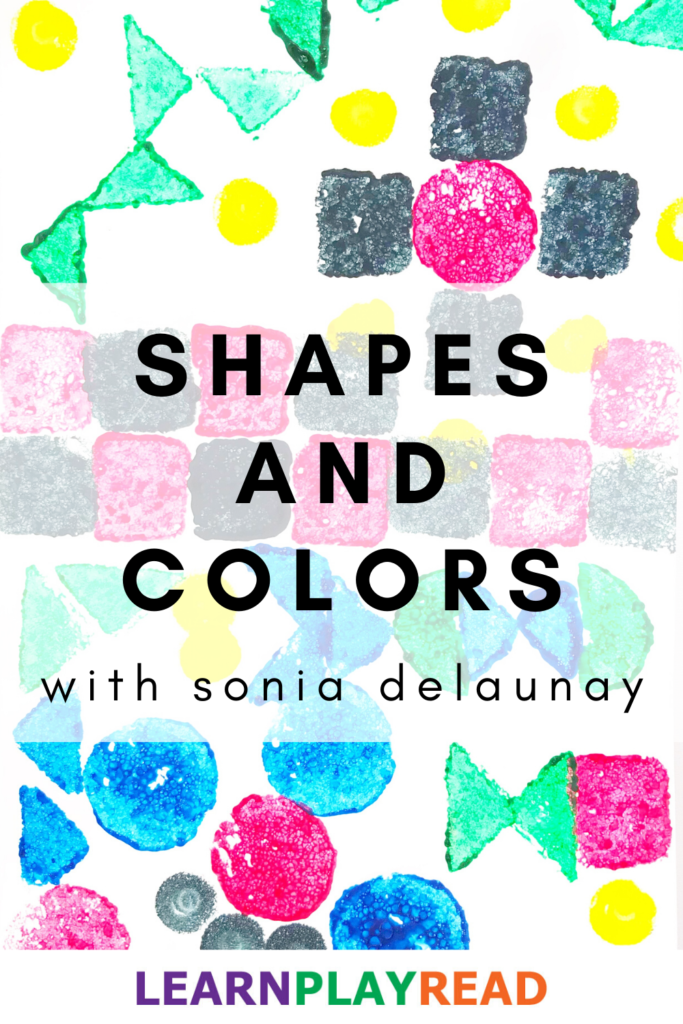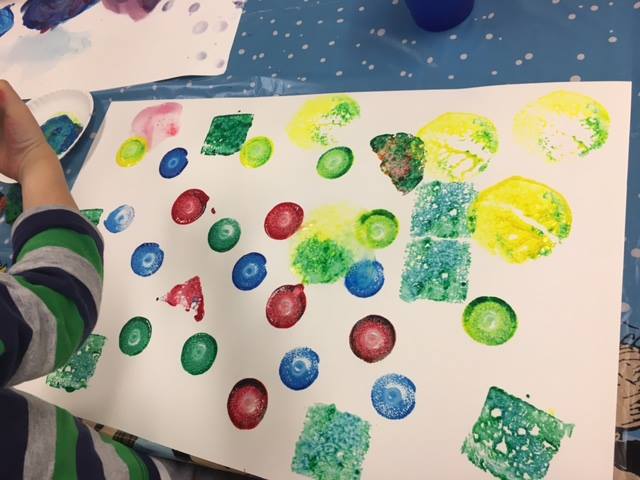Sonia Delaunay was a major player in introducing Orphism art. Orphism art focuses on using geometric shapes and strong colors.
Shapes and colors? Shapes and colors sound perfect for little artists learning basic techniques!
*We use affiliate links and may earn commission from purchases made through those links. All opinions are our own.
Little artists can use sponges and paint to create beautiful masterpieces using Delaunay’s work as inspiration. All you need is large pieces of paper or canvas boards, washable tempera paints, and sponges cut into different shapes. Hang up the finished product and anybody could mistake it for a valuable piece of art!

How To: The Artwork
Supplies:
- Poster board, canvas boards, card stock or other sturdy painting “canvases”
- Kitchen sponges cut into half circles, squares, circles, triangles, etc.
- Washable paint (I used tempera pain in red, blue, green, yellow and black.)
- Mini paper plates to hold the paint and allow full paint coverage on the sponges
Directions:
The kids can dip the different shaped sponges into the paint and then onto the paper to create a Sonia Delaunay shapes and colors affect. In our class, I included some printouts of Sonia Delaunay’s paintings for “inspiration” that we talked about before beginning the art project.
How To: The Program
In Young Artists, 2-5 year olds explore art in a way that engages their senses and helps them understand the world around them. Kids can see that they are capable of making creative and thought-provoking artwork when they explore famous artists and their artwork. Plus, I use exploring famous artists and their work to teach children about basic art techniques.
Like shapes and colors. Which brings me to Sonia Delaunay.
I used Sonia Delaunay to practice shapes and colors with toddlers and preschoolers because almost all of her art is made up of basic shapes.
Group Story:

To kick off the class, I had the kids sit on the storytime rug and listen to and look at the most beautiful pop-up book, Madame Sonia Delaunay by Gérard Lo Monaco. In addition to reading, I pointed out the different shapes and colors in the pop-up paintings.
Group Learning:
Since I only read the one book, I was able to keep the kids focused while I showed images of her work on our overhead projector and on printouts. The kids, with their caregivers’ help, found the shapes on the screen. They found this activity exciting.
Individual Art:
By this time, the kids were getting antsy, so we got started. First, they each got their own poster board piece (I cut a large poster board in half and split it between two kids.), sponges, and paints. Then, they dipped the sponges into the paint and filled their paper with shapes and colors! And that’s it! They took their art home to show their families.

During the program, the caregivers pointed out the shapes their children were painting with. As a result, they enforced the shapes concept into the program.
The young artists were happy, the young artists’ parents were happy and the young artists’ librarian was happy. Therefore, it was a successful morning in Young Artists! Woohoo!